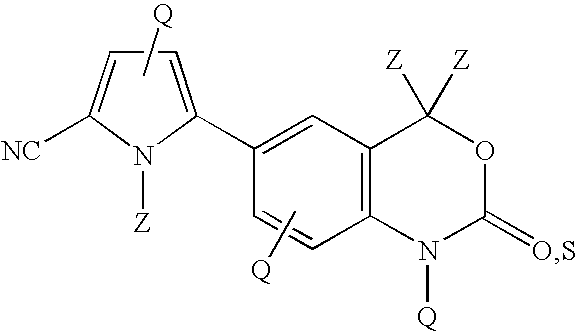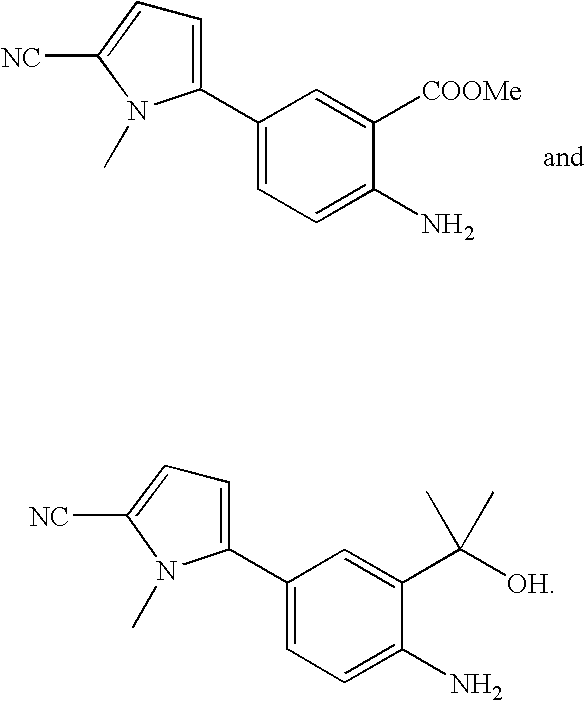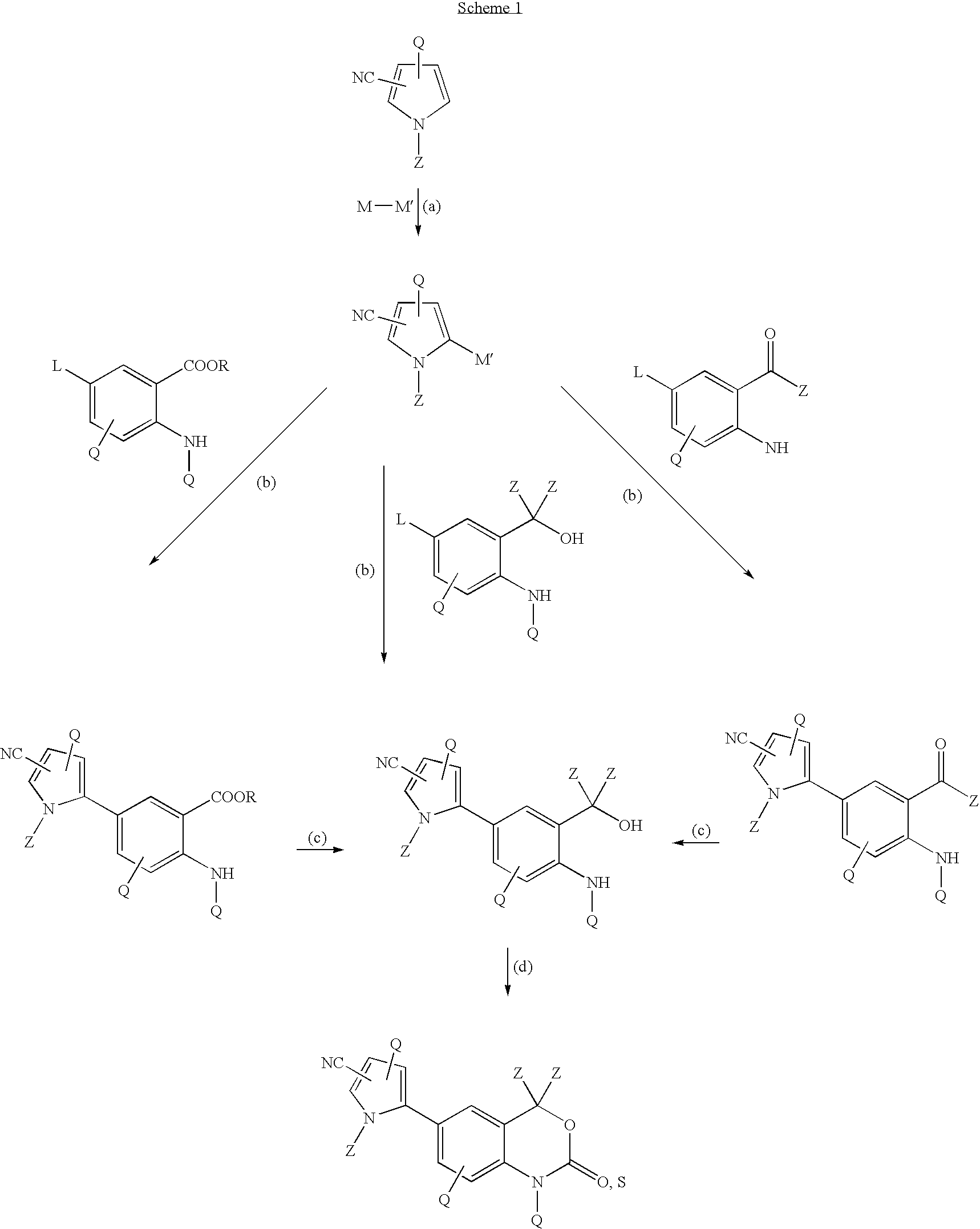Cyanopyrrole-containing cyclic carbamate and thiocarbamate biaryls and methods for preparing the same
a technology of which is applied in the field of methods for preparing cyclic carbamate and thiocarbamate compounds, can solve the problems of high cost and many steps of methods
- Summary
- Abstract
- Description
- Claims
- Application Information
AI Technical Summary
Benefits of technology
Problems solved by technology
Method used
Image
Examples
example 1
PREPERATION OF 2-AMINO-5-(5-CYANO-1-METHYL-1H-PYRROL-2-YL) BENZOIC ACID METHYL ESTER
[0162]1-Methylpyrrole-2-carbonitrile (0.106 g, 1.0 mmol), triisopropyl borate (270 μL, 1.2 mmol) and tetrahydrofuran (THF-4 mL) were mixed in a 50-mL flask equipped with nitrogen inlet, magnetic stirrer, and temperature controller. After cooling the solution to −3° C., 2M LDA solution (0.6 mL, 1.2 mmol) was added dropwise and the mixture was allowed to warm up to ambient temperature. Toluene (5 mL) was added followed by tetrakis(triphenylphosphine)palladium (25 mg), ethanol (1.6 mL), potassium carbonate (0.326 g), water (2 mL), and methyl bromoanthranilate (0.225 g, 0.98 mmol). The reaction mixture was heated to a gentle reflux for 7 h, then cooled and quenched with 5% hydrochloric acid (HCl), 10% ammonium chloride. It was extracted twice with ethyl acetate. The combined organic phase was washed with brine, dried over magnesium sulfate, filtered, and evaporated to give a dark, very viscous oil (0.307...
example 2
PREPARATION OF 5-[4-AMINO-3-(1-HYDROXY-1-METHYL-ETHYL)-PHENYL]-1-METHYL-1H-PYRROLE-2-CORBONITRILE
[0163]In a similar preparation, starting with 1-methylpyrrole-2-carbonitrile (0.104 g, 0.98 mmol), bromoanthranilic alcohol (0.245 g, 1.1 mmol) was coupled in the presence of tetrakis(triphenylphosphine)palladium (32 mg). After standard work up and evaporation, a glassy mass (0.198 g, about 93% yield), containing cyanopyrroleaniline alcohol, was obtained.
example 3
PREPARATION OF 6-BROMO-4,4-DIMETHYL-2-THIOXO-1,4-DIHYDRO-BENZOXAZINE
[0164]2-(2-Amino-5-bromophenyl)-propan-2-ol (1.028 g, 4.4 mmol) was dissolved in THF (12 mL) and TCDI (1.087 g, 6.1 mmol) was added as solid to form a hazy solution. After stirring the mixture for 140 min., it was transferred into a separatory funnel containing 5% HCl. After separation of the phases, the aqueous phase was extracted twice with 1:1 ethyl acetate / THF. The combined organic extracts were washed with brine and dried over MgSO4. Filtration and evaporation gave 1.081 g (89% yield) of the product.
PUM
| Property | Measurement | Unit |
|---|---|---|
| temperatures | aaaaa | aaaaa |
| temperatures | aaaaa | aaaaa |
| temperature | aaaaa | aaaaa |
Abstract
Description
Claims
Application Information
 Login to View More
Login to View More - R&D
- Intellectual Property
- Life Sciences
- Materials
- Tech Scout
- Unparalleled Data Quality
- Higher Quality Content
- 60% Fewer Hallucinations
Browse by: Latest US Patents, China's latest patents, Technical Efficacy Thesaurus, Application Domain, Technology Topic, Popular Technical Reports.
© 2025 PatSnap. All rights reserved.Legal|Privacy policy|Modern Slavery Act Transparency Statement|Sitemap|About US| Contact US: help@patsnap.com



